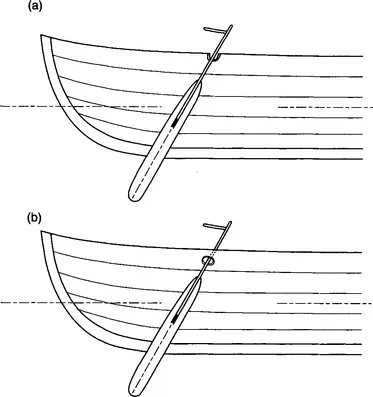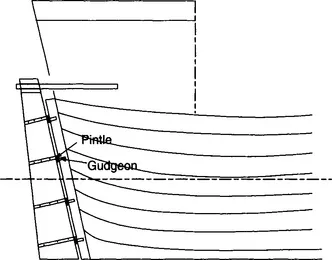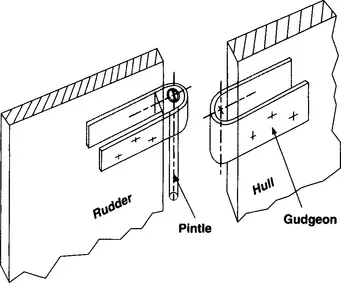![]()
Part One
Principles
![]()
1
Introduction
The fundamental concept of a movable device to steer a ship has been in use since ships were first conceived. The purpose of the device, or rudder, is to either maintain the ship on a particular course or direction, or to enable it to manoeuvre.
Although unaware of the mathematics associated with the dynamics of ship manoeuvring, people for many centuries have been aware of the role of the rudder in solely establishing an angle of attack on the hull, with the hydrodynamic forces developed on the hull largely turning the ship. For example, as James [1.1] observed nearly 2,000 years ago: “Or think of ships: large they may be, yet even when driven by strong gales they can be directed by a tiny rudder on whatever course the helmsman chooses.” Although relatively small, submerged, and out of sight, the rudder is fundamental to the safe operation of the ship. The rudder has, therefore, always attracted considerable interest, research and development.
From the time of the early Egyptian ships onward, steering was carried out by means of a side-mounted steering oar over the after quarter, Figure 1.1. The oar rested in a notch cut in the gunwale, or passed through a hole cut in the gunwale, sometimes termed an ‘oar port.’ Later versions passed through a wooden bracket mounted on the side of the ship or were attached by a withy, or rope, forming a kind of hinge. The dominant use of the side-steering oar concept, sometimes termed a quarter rudder, continued until the twelfth century when there was a distinct change in the concept from a side-steering oar to a stern-mounted rudder using pintles and gudgeons (which may be broadly described as hinges), Figures 1.2 and 1.3. Although changes in ship propulsion from oars to sail to motor power have led to changes in detailed rudder–hull layout, the stern-mounted rudder remains the principal concept.
Figure 1.1 Early ships with side-mounted steering oars
Figure 1.2 Early version of stern-mounted pintle and gudgeon rudder on a cog
Figure 1.3 Pintle and gudgeon
The seagoing ship basically evolved from the Egyptians from about 3000 BC. The same era also saw the development of the sail, although oars supplemented by sails, or vice versa, would be the custom for many centuries. Around 1000 BC, the Greek galley had evolved as the prevailing fighting ship. The Romans adopted the galley from the Greeks through the era from approximately 300 BC to 400 AD. From the mid-eighth to mid-eleventh centuries the Viking ship became the dominant type of craft. At about the same time, the standard vessel for northern Europe was the cog. The cog was descended from the Viking cargo vessel, although shorter and fatter with a straight stern and straight bow, a single mast and a square sail. It was the vessel used by the Hanseatic League of traders, established during the thirteenth century. Also prevalent at the time was the hulk, which was clinker built but with a bow and stern that curved upward. It was to the cog and hulk that the stern-hung pintle and gudgeon rudder was first fitted. Up to this era, the side-steering oar had been employed. By the end of the fourteenth century, the basic generic forms of the cog and hulk had merged together.
The side-mounted steering oar, or quarter rudder, had many variations over the years, including many shapes and attachment methods. As ships grew in size, many early arrangements had two-quarter rudders. Details of the development of the rudder are described by Mott [1.2] and descriptions of the various ship types through the ages, including their propulsion and steering methods, may be found in references [1.3–1.5].
It is important to note that the side-mounted steering oar was developed over the years to a very efficient level. In its most developed version, for example, on the Viking ships, it would have a form of rope hinge on the side of the ship and a tiller to assist the helmsman, Figure 1.4. The oar, or stock, would run through the centre of the blade, so the steering oar was effectively balanced, lowering torques and tiller forces.
Figure 1.4 Viking steering oar
The reasons for the move from the side-steering oar to the stern-mounted rudder in the twelfth century are not clear [1.2]. It is likely to have been due to...




